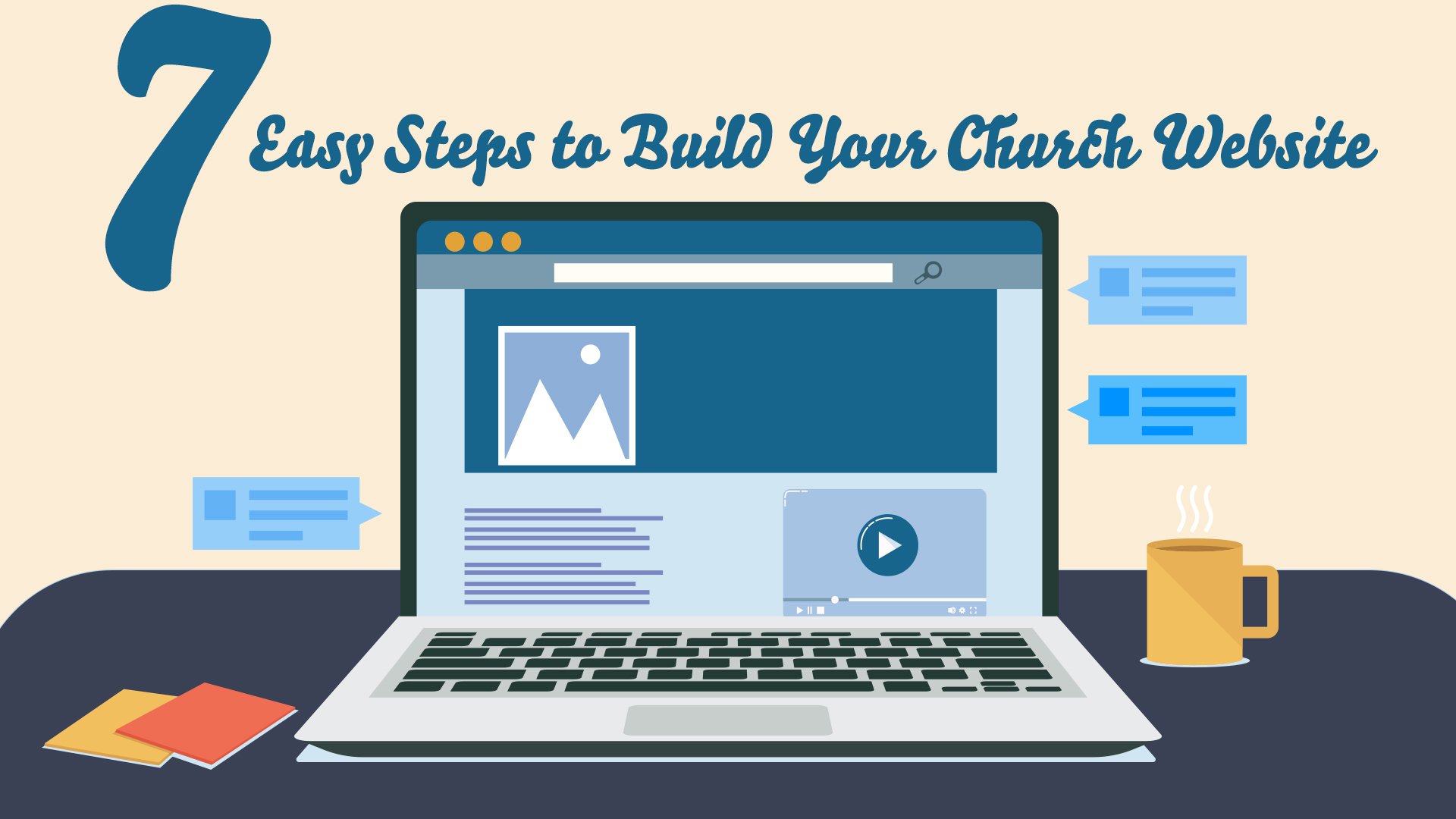
Building a church website is no small feat. When you consider all the elements that go into such a project, it can quickly become overwhelming. Yet when you break it all down step by step, things are far more manageable.
You can begin by establishing a timeline for working through and mapping out various parts of the project. This will allow you to identify the foundational pieces, put building blocks in their place, and add finishing touches in an order that makes sense.
As you work through the following seven steps, it may be helpful to keep a running list of potential collaborators and contributors for specific areas. Assigning initial deadlines to each portion and making adjustments as you go will be key to moving things forward.
Ready? Let’s go!
1. Start with Your Purpose
On your own and with others, consider the why behind your website and who you would like it to serve. What do you want your website to do? Inform, engage and connect, enrich and educate? Who is the audience you’re serving? Members, potential visitors, community members seeking resources?
Knowing your primary purpose and audience brings focus to the project. This insight will inform nearly every other choice you make. Having an end user in mind clarifies decisions as you imagine them navigating your website with ease and discovering what they’re looking for.
2. Select a Platform
Where will you build your website? Platforms run the gamut from complex design-your-own to intuitive, predesigned, and customizable templates. If you or someone in your congregation are adept at website building, building your site from scratch may be your route. WordPress is a popular platform for church websites because of its wide breadth of themes and features. Platforms like Church360° Unite are created specifically with church communities in mind, offering a variety of themes and features for staying connected and engaged throughout the week, directory integration for simple user login, and access granting.
When deciding on a platform for your church website, also consider who and how many people will need to access and update the backend, handle mobile responsiveness and media integration, and what user support is offered by the company.
3. Plan Your Site Map
This is where you brainstorm and decide on the pages that will live on your church website. Start with the basics like location information and directions, service and Bible study times, and contact information. As you make an initial list, take note of the broader categories each item falls into. This will help when you organize your site navigation.
Sticky notes and a large, empty wall or whiteboard can be helpful tools for this process as you add, take away, order, and reorder the various site components you’re mapping out. This also supports the often collaborative nature of the task.
4. Decide on Your Content
How will you fill in the outline of the pages you just mapped out? What elements will you use to communicate the story of how God is working in your congregation and community? Now is the time to start building your content collection—photos, text, graphics, videos, and so on.
Go back to your purpose and keep your audience in mind when creating this list and pulling in various elements. Ask how each piece will serve those exploring your online home. Will it engage and connect or distract and overwhelm? As tempting as it may be to put all the photos or videos taken at every church function on your website, remember that simpler is better.
Once you determine the content you need (and of equal importance, what you don’t need!), it’s time to start collecting. Mine your congregation’s digital and physical archives. Search for stock photos that fit your purpose and plan.
5. Build Your Pages
This is where things really start coming together. If you’re building from scratch, the process will naturally be more involved. Using a platform with predesigned themes will offer page templates.
Determine the page layouts that will best serve your audience and purpose and add your gathered content. Throughout this stage, you’ll likely find gaps in your collection. Have a running list and fill it in as necessary.
6. Proofread and Review Your Site
Send preview links of the site you’ve been building to a handful of trusted people. Consider those in leadership positions, members who might not otherwise be involved, and even someone outside of your congregation who can share feedback you might otherwise be blind to.
Proofread for general grammatical and spelling accuracy, for context, and to determine how intuitive it is to navigate the site. Would the language and layout make sense to someone who’s encountering your church for the first time? Does it feel like an extension of the environment you cultivate in person?
7. Connect Your Domain and Publish Your Website
Linking your domain or URL (what people type in to see your website, i.e., concordiatechnology.org) is the final step before officially publishing your new website. This process, which links the site you’ve been building to the greater directory of all the internet, can take twenty-four to seventy-two hours to complete. Be sure to take this timeline into account when planning for your website’s public launch.
Keep in mind that websites are not static documents. Additional tweaks will be needed. Consider elements like social links, opt-ins for texting or email updates, church directory integration, and community forums.
Each step of a website building project will vary in the time it will take to complete based on the platform used, the number of pages, the tools at hand, the experience of the user, and the support available. As mentioned above, a good rule of thumb is to plan for more time than you think you’ll need while still setting deadlines for both yourself and others to keep things moving along. Happy building!
Download a free website builder checklist to help you begin the journey of making your wonderful church website for visitors and members to enjoy.
























